Posted by Elena del Valle on June 22, 2020

Marleny Gomez, realtor, HomeSmart
Photo: HomeSmart Elite Group
A podcast interview with Marleny Gomez, realtor, HomeSmart, during which she shares her thoughts about real estate in Arizona post pandemic is available in the Podcast Section of Hispanic Marketing and Public Relations, HispanicMPR.com.
According to her bio Marleny, a United States Marine Corps veteran, is on a mission to help families build and grow their wealth through home ownership. She has a background in organizational communication, leadership, project management and strategic planning. She is membership director for the Arizona Women’s Council of Realtors and membership director of the National Association of Hispanic Real Estate Professionals for the Greater Phoenix area.
She received the 2020 Top 40 under 40 in the West and South East Realtors of the Valley Award, 2020 Top 100 Latino Realtors in the West award from the National Association of Hispanic Real Estate Professionals, and is among the top 5 percent in HomeSmart realtors nationwide in 2020. Marleny is a servant leader who shares her knowledge by volunteering her time and leading as the local vice president of the board of WeServ West Valley, the local real estate association.
To listen to the interview, scroll down and click on the play button below or locate the “Podcast” section on the right hand side, then choose “HMPR Marleny Gomez” or download the MP3 file to your iPod or MP3 player to listen on the go, in your car or at home from the RSS feed. Some software will not allow flash, which may be necessary for the podcast player. If that is your case, you will need to download the file to play it. To download it, click on the arrow of the recording you wish to copy and save it to disk. The podcast will remain listed in the June 2020 section of the podcast archive.
Posted by Elena del Valle on June 18, 2020
Information provided by Event Partner

Becoming 21st Century Leaders: Women in Beekeeping & Agriculture
Oct. 24-25, 2020, Walsh University, 2020 E. Maple St., N. Canton, OH
A conference for our time: on-site and virtual online
LEAD for Pollinators is excited to present a national conference Becoming 21st Century Leaders: Women in Beekeeping and Agriculture. This event will be held at Walsh University, 2020 E. Maple St., N. Canton, OH 44721, October 24-25, 2020.
The conference will offer three educational tracts: Leadership, Business, and Safety for Women (in the bee yard and in the board room), featuring a total of 32 different topics. Speakers are trained, experienced, licensed experts in law, accounting, biology, volunteer administration, education, leadership, and more. Speakers will provide you with the “how to” you need to start your business, provide insightful “lessons learned” from real-world experience in management, and offer skills and strategies for personal safety in and around the bee yard and the board room. To learn more about the speakers go to https://leadforpollinators.org/index.php/speakers/
This event serves unique needs in beekeeping and agriculture. Planning for all contingencies in an uncertain world, we are expanding the attendance option to include “virtual on-line attendance” for registered attendees. Our conference will be produced by professional conference videographers and IT specialists experienced in virtual events.
Our featured speaker at the opening day lunch will be Denise O’Brien, founding Director of the Women, Food and Agricultural Network. Denise has farmed in southwest Iowa for 37 years with her husband Larry Harris, and operated a CSA farm called Rolling Acres that includes three acres of fruits and vegetables and six acres of apples. She also raises organic chickens and turkeys. In addition to farming, she has been involved with community volunteering and policy work in the agricultural sector. Denise lobbied with the Iowa Farm Unity Coalition, directed the Rural Women’s Leadership Development Project of Prairie Fire Rural Action, Inc. and was president of the National Family Farm Coalition. Denise has served on numerous advisory boards with the Community Food Security Coalition, the Farm to School Council, and the Iowa Women’s Foundation to name a few. She was a W.F. Kellogg Food and Society Policy Fellow from 2001-2003. From 2011 to 2012, Denise was a USDA advisor in Jalalabad, Afghanistan.
For her depth of work and outreach, Denise has received the 2005 Practical Farmers of Iowa Sustainable Agriculture Award, the Lifetime Achievement Award from the Iowa Farmer’s Union and the Athena Award from the Atlantic, Iowa Chamber of Commerce. In 2000 Denise was inducted into Iowa’s Women’s Hall of Fame.
Becoming 21st Century Leaders: Women in Beekeeping & Agriculture, Oct. 24-25, 2020, will bring together (on-site and virtually online) a hive of experienced, diverse, purposeful individuals to expand the opportunities for women (and men) as keepers of the ecosystem to support the health and sustainability of honey bees, native pollinators, and beekeeping. Learn more about our scheduled speakers on our website under “Becoming 21st Century Leaders,” (https://leadforpollinators.org/index.php/becoming-21st-century-leaders/ )
Save the dates and plan to attend. Registration opens August 1st. For more information, visit our website at www.leadforpollinators.org, or email info@leadforpollinators.org
Posted by Elena del Valle on June 17, 2020
Between Scientific Challenge and Reputational Impact
Will the value of innovation be recognized?
By Javier Marin
Senior director
Healthcare Americas
LLYC

Javier Marin, senior director, Healthcare Americas, LLYC
Photo: LLYC
SARS-CoV-2, or COVID-19, was first detected in mid-December 2019. The virus had already spread by the time its source had been discovered because, unlike other viruses (such as SARS-CoV-1), this one can remain hidden for a long time. However, after five months of this health and economic crisis, there are now signs of hope for curing and vaccinating the population thanks to the swift efforts of dozens of scientists around the world. Every day, they are getting closer to finding a medicine that promises to end this deadly virus. Scientists in China, Germany and the United States are leading the research in the race to develop therapies and vaccines. Click to read the entire Innovative Medicines and Vaccines to Fight COVID-19
Posted by Elena del Valle on June 8, 2020
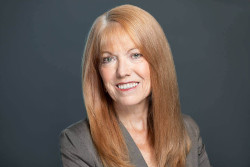
Engelina Jaspers, author, Marketing Flexology
Photo: Curtis Myers
A podcast interview with Engelina Jaspers, author, Marketing Flexology (Flex Pro Media, $26), about the need for marketing agility is available in the Podcast Section of Hispanic Marketing and Public Relations, HispanicMPR.com.
Over a rewarding 30-year corporate career, Engelina experienced revolving-door CEOs, business course-corrections and lots of reinventions. After leading multiple company wide transformations, she learned what separates the career winners from the career losers during change and transformation. She shares what she’s learned through customized workshops, presentations, consulting engagements and her book.
To listen to the interview, scroll down and click on the play button below or locate the “Podcast” section on the right hand side, then choose “HMPR Engelina Jaspers” or download the MP3 file to your iPod or MP3 player to listen on the go, in your car or at home from the RSS feed. Some software will not allow flash, which may be necessary for the podcast player. If that is your case, you will need to download the file to play it. To download it, click on the arrow of the recording you wish to copy and save it to disk. The podcast will remain listed in the June 2020 section of the podcast archive.
Click to buy Marketing Flexology
Posted by Elena del Valle on June 3, 2020
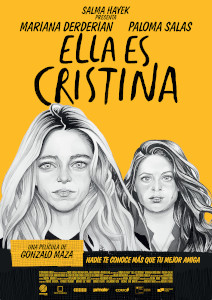
This Is Cristina (Ella Es Cristina) poster
Photo: Figa Films
One of the feature films in this year’s 19th Los Angeles Latino International Film Festival (LALIFF), part of the Festival’s Official Selection, was This is Cristina (Ella Es Cristina). The 82-minute Chilean film from Mar Humano and Primate Lab, in Spanish with English subtitles, was directed by Gonzalo Maza and distributed by Figa Films. Scroll down to watch a trailer.
Salma Hayek was executive producer along with José Tamez and Siobhan Flynn. The film received support from the Fondo de Fomento Audiovisual. The 2018 film, starring Mariana Derderian, Paloma Salas, Roberto Farias, Daniella Castillo, Nestor Cantillana, Alejandro Goic and Claudia Celedon, tells the story of two women in their thirties, Cristina and Susana, who have been best friends since high school. As their lives change their friendship suffers and is tested. There is a surprise ending. The film should be available at festivals and online beginning in September.
Despite the COVID-19 pandemic this year’s Los Angeles based Festival, established in 1997, included seven feature films and 23 short films from 12 countries. The festival took place May 5 to 31, 2020. The countries represented were Argentina, Australia, Brazil, Canada, Chile, Colombia, Cuba, Mexico, Peru, Spain, United States and Uruguay.
Other features included Paper Children and The Last Rafter. Shorts included: 1, 2, 3, All Eyes On Me Accents; Acuitzeramo; Ailin on the Moon; Baby; Blanes and St. Muller; Borrachero; Flesh; Flowers Within; Lady Justice; María; Miguel; Muy Gay Too Mexicano; Napo; Ode to the Beans; Rizo; Say You Will; Status Pending; The Undocumented Lawyer; and Wilderness.
An organization spokesperson declined to identify the names of the individuals responsible for selecting films for inclusion in this year’s festival. Funding, she said, is from “sponsors, donors and grants.” As of this writing the only contact information available on the event website is via a contact form. No street address or phone number are listed.
According to a press release for the festival “LALIFF is presented by the Latino Film Institute (LFI), a nonprofit 501(c)(3) organization with the mission to showcase, strengthen, and celebrate the richness of Latino lives through the audio-visual event. According to the LALIFF About Us page, “The Latino Film Institute (LFI) showcases, strengthens, and celebrates the richness of Latino lives by providing a pipeline, platform, and launching pad from our community into the entertainment industry.” It describes LALIFF as “dedicated to showcasing the entirety of human experience from the Latino perspective, whether through film, television, digital, music, art, or any other vehicle, regardless of platform.”
Posted by Elena del Valle on May 18, 2020
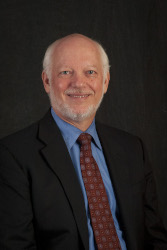
Randy Pherson, author, How to Get the Right Diagnosis
Photo: Randy Pherson
A podcast interview with Randy Pherson, author, How to Get the Right Diagnosis, about the questions to ask your doctor if you don’t want to die is available in the Podcast Section of Hispanic Marketing and Public Relations, HispanicMPR.com.
Randy is chief executive officer of Globalytica, LLC; president, Pherson Associates, LLC; and a founding director of the non-profit Forum Foundation for Analytic Excellence. He teaches advanced analytic techniques and critical thinking skills to analysts in most of the 17 United States Intelligence Community agencies, in ten of the Fortune 100 companies, and in the United Kingdom, Italy, Norway, Denmark, Romania, Australia, Saudi Arabia, and Hong Kong.
He has authored, co-authored, or edited eleven books. He is best known for two books analysts encounter in their training: Structured Analytic Techniques for Intelligence Analysis and Critical Thinking for Strategic Intelligence.
Randy was a career Central Intelligence Agency of the United States (CIA) intelligence analyst and manager, last serving as National Intelligence Officer (NIO) for Latin America. He is a recipient of the 2000 Distinguished Intelligence Medal for his service as NIO and the CIA’s Distinguished Career Intelligence Medal also in 2000.
To listen to the interview, scroll down and click on the play button below or locate the “Podcast” section on the right hand side, then choose “HMPR Randy Pherson” or download the MP3 file to your iPod or MP3 player to listen on the go, in your car or at home from the RSS feed. Some software will not allow flash, which may be necessary for the podcast player. If that is your case, you will need to download the file to play it. To download it, click on the arrow of the recording you wish to copy and save it to disk. The podcast will remain listed in the May 2020 section of the podcast archive.
Posted by Elena del Valle on May 13, 2020

Botero poster
Photo: Corinth Films
An 84-minute long film showcasing the life and art of Fernando Botero, known internationally for his paintings and sculptures, was released by Corinth Films this month in several California, Pennsylvania, Minnesota, Louisiana and Colorado theaters. It has appeared in 13 film festivals. A trailer was not available.
It features interviews with the author, his adult children and other relatives as well as art curators, academics and historians. It is in Spanish, English, Italian, and French with English subtitles. The 2018 film was directed by Don Millar, written by Millar and Hart Snider. According to promotional materials, it includes original footage shot in 10 cities across China, Europe, New York and Colombia, with decades of family photos and archival video. His daughter, Lina Botero Zea, is listed as chief creative consultant and executive producer. This may account for the film’s access to the artist and his family as well as family homes and the artist’s studio in Monaco.
Millar is a Canadian film and television director based in Vancouver. His previous directorial credits include the climate change documentary Oil Slick, Full Force about rugby star Harry Jones, and the scripted narrative Off the Clock. Corinth Films has been distributing foreign and independent arthouse cinema in the United States and Canada since 1977.
Posted by Elena del Valle on May 6, 2020

Nuestras Madres poster
Photo, video: Outsider Pictures
Nuestras Madres (Our Mothers), a 78-minute documentary style drama in Spanish with English subtitles from Outsider Pictures had its virtual theater release at 15 locations in the United States last week. The somber film was Winner Camera D’or, Cannes Film Festival and Belgian Entry to 92nd Academy Awards. Scroll down to watch a trailer.
It features Mexican actor Armando Espitia as Ernesto, a young anthropologist working for the Forensic Foundation in Guatemala in 2018 during the trial of the soldiers who sparked the civil war. Charged with identifying the bodies of the missing he has a personal mission. Emma Dib is Cristina, his mother.
The account of an older woman from a small village convinces Ernesto he has a promising clue to find his father, who went missing during the war. Although his mother and his boss urge him to leave well enough alone he presses forward.
César Díaz, director, heard from his mother about his father, also a “disappeared” guerrilla fighter. He began the project as a documentary about military massacres during the Guatemalan civil war in the 1970-80s. After meeting women in the villages where the fighting took place he turned it into a feature drama. According to promotional materials, their testimonies, often full of violent tales, reveal the story of Guatemala’s history as one of the first Central Intelligence Agency “Black Operations.”
“In Guatemala, fathers are absent as a general rule,” Díaz said in a press release (he was not available for a podcast interview). “Many children born of rape think that their father just left at some point. I therefore wanted the mother to reveal her secret, because it is a way of accepting and living with the consequences of what has happened. In a post-dictatorship, post-war situation, I think there must be collective acceptance, which can then be followed by individual moving on. Nuestras Madres is, to my knowledge, the first film to deal with this subject head-on.”
According to press materials for the film only 1 percent of the disappeared have been identified after over 20 years of searches. The genocide trial in the film is a mixture of many trials taking place, as is the uncovering of mass graves and returning the bodies to the families.
The film was made with the support of Centre du Cinéma et de l’Audiovisuel de la Fédération Wallonie Bruxelles Proximus Eurimages. Born in Guatemala in 1978 Díaz studied in Mexico and Belgium. He attended a screenwriting workshop at La Fémis (Ecole Nationale Supérieure des Métiers de l’Image et du Son, the FEMIS Film School) in Paris, France. He has been a fiction and documentary film editor for more than a decade. He directed the short documentary films Semillas de Cenizas screened in twenty international film festivals. Nuestras Madres is his first feature film.
Beginning May 1, 2020 Our Mothers became available nationally via local art house cinemas for $12 per ticket, split equally with the local cinema to help support them during the pandemic. As of this writing the theaters are: in California: Los Angeles at Laemmle Theaters, Davis at Varsity Theater, Larkspur at The Lark, Santa Ana at The Frida Cinema, San Diego at Digital Gym Cinema; in Denver, Colorado at SIE Film Center; in Florida: Fort Lauderdale/Hollywood at Fort Lauderdale International Film Festival, in Miami at Tower, in Tampa at Tampa Theater; in Michigan: Detroit at Cinema Lamont, Ann Arbor at Michigan Theater; in St Louis, Missouri at Webster University Film Series; Albuquerque, New Mexico at The Guild Cinema; in Buffalo New York at North Park Theater; in Cleveland, Ohio at Cleveland Cinematheque; and in Philadelphia, Pennsylvania at Cinespeak.
Posted by Elena del Valle on April 27, 2020

Hilary Topper, author, Branding in a Digital World
Photo: HJMT Public Relations
A podcast interview with author Hilary Topper is available in the Podcast Section of Hispanic Marketing and Public Relations, HispanicMPR.com. During the podcast, she discusses her book Branding in a Digital World with Elena del Valle, host of the HispanicMPR.com podcast.
Since 1992 Hilary has been the chief executive officer of HJMT Public Relations. She is also adjunct professor at Hofstra University, where she teaches digital communication, public relations tools, and persuasive presentation for undergraduate and graduate students.
Since 2011 she is the host of a weekly podcast (Hilary Topper On Air) and chief curator of HJMT Media Company, LLC, where she writes for two blogs, NYLifestyleBlog.com and ATriathletesDiary.com. According to her biography her blogs receive more than 50,000 unique visitors a month.
She wrote Branding in a Digital World to offer small business owners information on how to grow their businesses through digital media. Her first book, Everything You Ever Wanted to Know About Social Media, but were afraid to ask… was published in 2009.
To listen to the interview, scroll down and click on the play button below or locate the “Podcast” section on the right hand side, then choose “HMPR Hilary Topper” or download the MP3 file to your iPod or MP3 player to listen on the go, in your car or at home from the RSS feed. Some software will not allow flash, which may be necessary for the podcast player. If that is your case, you will need to download the file to play it. To download it, click on the arrow of the recording you wish to copy and save it to disk. The podcast will remain listed in the April 2020 section of the podcast archive.

Click to buy Branding in a Digital World
Posted by Elena del Valle on April 22, 2020
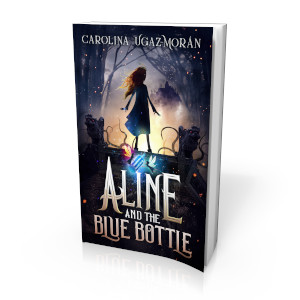
Aline and the Blue Bottle
Photos: Damonza (book cover), Farshad Khoshroo (author photo)
Carolina Ugaz-Moran, a native of Spain raised in South America and the United States with degrees in biochemistry and creative writing from the University of Wisconsin, spent ten months spread over 15 years writing Aline and the Blue Bottle, her first book. The 303-page softcover book published in 2019 includes Spanish and Quechua words, a map at the beginning as well as a page of Spells and a glossary at the end. Her target audience? Children eight to twelve years old and older.
“The cover depicts Aline standing on the House of Haunted Gargoyles facing her future, a magical floating castle with mysterious creatures flying around,” the author said by email when asked about the cover art. “She is at the entrance of a forest, with vines that surround her and behind her are her two loyal and close magical friends carrying the blue bottle. The cover also holds secrets (just like within the book).”
She went on to explain, “The title highlights Aline, her adventure, and her first quest to find the blue bottle and save many worlds. It also shows strength, courage,passion, and empowerment – in this case for a girl, depicting mysteries and magic which Aline and her friends will have to face together.”
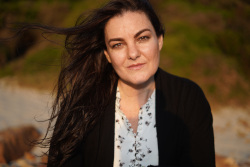
Carolina Ugaz-Moran, author, Aline and the Blue Bottle
When asked why she included Quechua she said, “I think the more exposed we are to languages as children, the more neurons we connect and the better we can develop the ability to become multilingual, so why not add Quechua and Spanish! But for me, it is more than learning a new language, it is about understanding a culture and exposing oneself to the abundance fountain of knowledge that each language provides.
Also, a few years ago, I found out that even though several people can speak Quechua (8-10 million people) very few people can actually read and write it due to the lack of printed material in Quechua. There have been efforts from the Peruvian, Ecuadorian, and Bolivian governments to introduce the language as an intercultural bilingual education; however, some indigenous people in each of these countries are having their children study in Spanish for the purpose of social and economical advancement. I thought I tried to help out a little plus I can learn on the way. Fun fact: there are about 45 varieties of Quechua which are all classified as separate languages and in addition, there are several dialects.”
When asked if her biochemistry studies help her or play a role in the project she said, “Yes, as well as my love for science and nature. This can be seen in several places. The chimera twins. They are powerful sylph sisters who have an important role in the book series. A chimera is a single organism that contains two sets of DNA with the code to make two separate organism. Simply put, it is an organism made up of cells from two or more different individuals.
The explanation of magic and how it flows, it somewhat reflects the states of energy as well as the law of conservation of energy. The blue and red stars and how from earth, the cooler stars appear red, and the high temperature stars appear blue. The symbiotic relationship between sharks and remora fish, I am an animal lover and I am looking for ways for people to admire and be kind to even the scariest of animals.”
She is working on the second book in the Aline series. It will be called Aline and the Kron Queen.

Click to buy Aline and the Blue Bottle
Comments:
Filed Under: Books






















